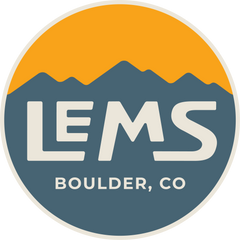When was the last time you were fitted for the right shoe size? If you’re like most people, it’s probably been awhile. You learned your size and then just continued to purchase shoes in that size.
You may be shocked to learn then, that a study performed by the College of Podiatry in the UK revealed that one third of men and nearly half of women were wearing the wrong shoe size.
As we age, ligaments and soft tissues in our feet stretch and relax, causing our feet to change shape and size.
Wearing poor-fitting shoes can lead to a number of foot problems, including general pain, bunions, hammertoes, and other deformities. Before you purchase your next pair of shoes, make sure that you’re getting the right size. Read on to find out how to find out your correct shoe size.
Signs that You’re Not Wearing the Right Shoe Size
It’s not always super obvious that you are walking around in the wrong size shoe. Here are a few indications that you need to find a new size:
- Blisters
- Ingrown toenails
- Bunions
- Rubbing
- Corns
- Calluses
If you experience any of the above with regularity, it’s probably time to check to see if you’re wearing the right size shoe.
Have your Feet Professionally Measured
A lot more people are purchasing shoes online these days, so it’s a good idea to measure your feet in a store before buying. Not only will this keep your feet happy, but it will also avoid the hassle of returning ill-fitting shoes.
If you really can’t get to a professional shoe fitting, then you can measure your foot at home by following the steps outlined in the shoe measurement chart below.

Bring the tracing of your foot with you to the store if you go to purchase shoes in person and place the foot over the tracing. If it is more narrow or shorter than the drawing, then keep looking for another pair.
Purchase Shoes for the Larger Foot
Most people have different-sized feet. The discrepancy is usually pretty minimal, but it’s better to buy a shoe that is slightly larger than one that is too small. You can purchase spacers and inserts to accommodate the smaller foot.
If one foot is over 1 ½ sizes larger, then look into getting two different sized shoes.
Measure Your Feet At The End Of The Day
Measuring at the end of the day can also help you get the perfect fit. Why? Throughout the day your feet swell and change size. Knowing your size when your feet are at their max means you're less likely to feel squished in your shoes.
If you are a runner or plan to wear them hiking, consider sizing up a half or full size, as your feet will swell further during exercise.
Stand up for an Accurate Measurement
Standing up when measuring and trying on shoes will allow your toes to fully splay and give you a more accurate feel for the sizing.
When you’re standing, make sure that you’re standing tall and looking straight ahead. Posture can make a difference in accurate measurement.
Check Your Space At The End Of Your Toes
Trying on new shoes should bring you back to memories of your mom checking every new pair of shoes you wanted by pushing down on the front of the shoes at the toe. Well, mom was right.
That’s the right way to determine whether or not a shoe is too big or too small. Giving the end of your shoes a push at the toes is still a great way to ensure you have (literal) wiggle room. Ideally, you’ll have space that’s about the width of your thumb between the end of your shoes and your toes.
Bring the Socks You Plan to Wear with You
Have you ever set out to wear a new pair of shoes only to find they feel a bit snug? Or maybe you’re wearing thinner socks and they feel too loose.
Bring the socks you plan to wear most with the new pair of shoes so that you can really get a sense of whether they will feel comfortable in the set up you plan to use most.
For example, bring your hiking socks to sample hiking shoes, running socks for running shoes, or go barefoot if that’s how you plan to wear the shoe.
Take ‘Em For A Test Drive
You can get a pretty good feel for the comfort of your shoes by doing a quick walk in them indoors. If you feel any sort of rubbing or discomfort, those are pretty good signs that you’ve grabbed the wrong size.
If you want to try a pair of Lems shoes on in person, check our store locator to find a store near you!

